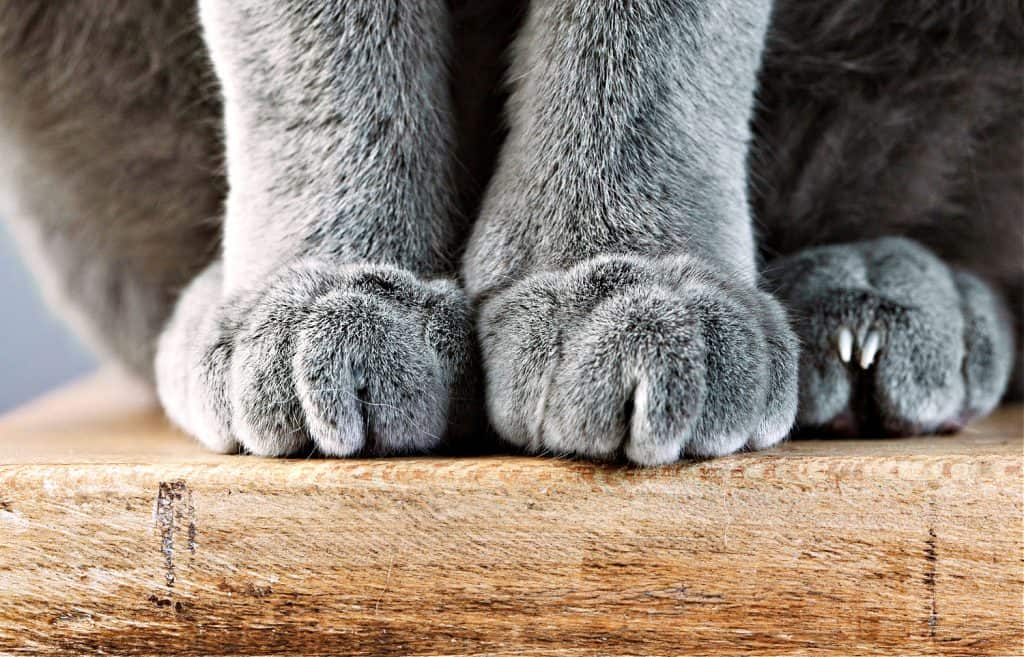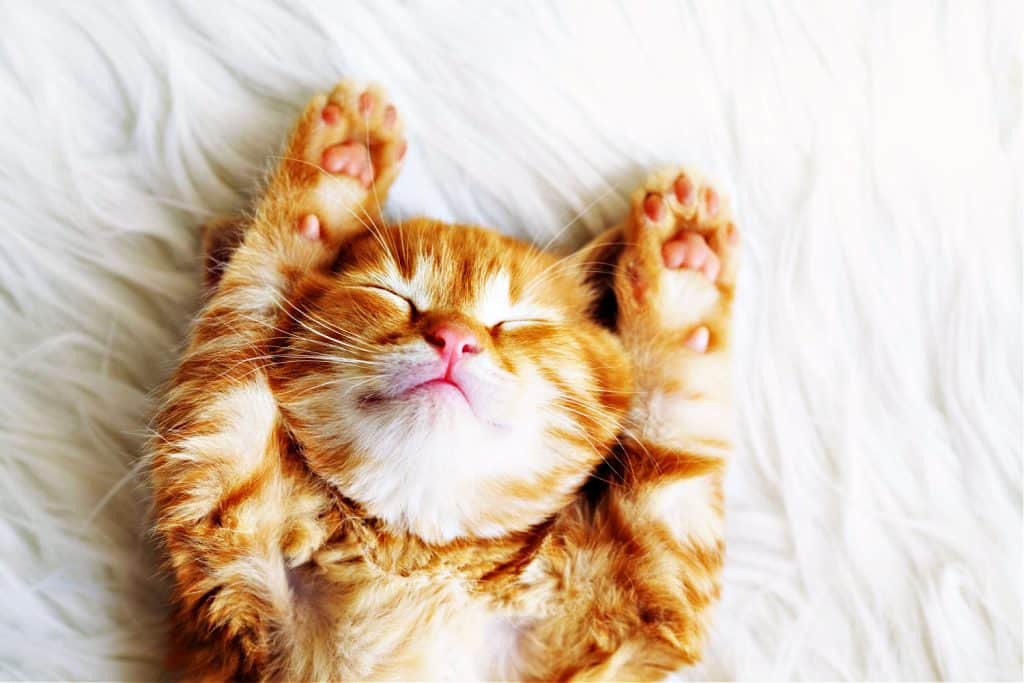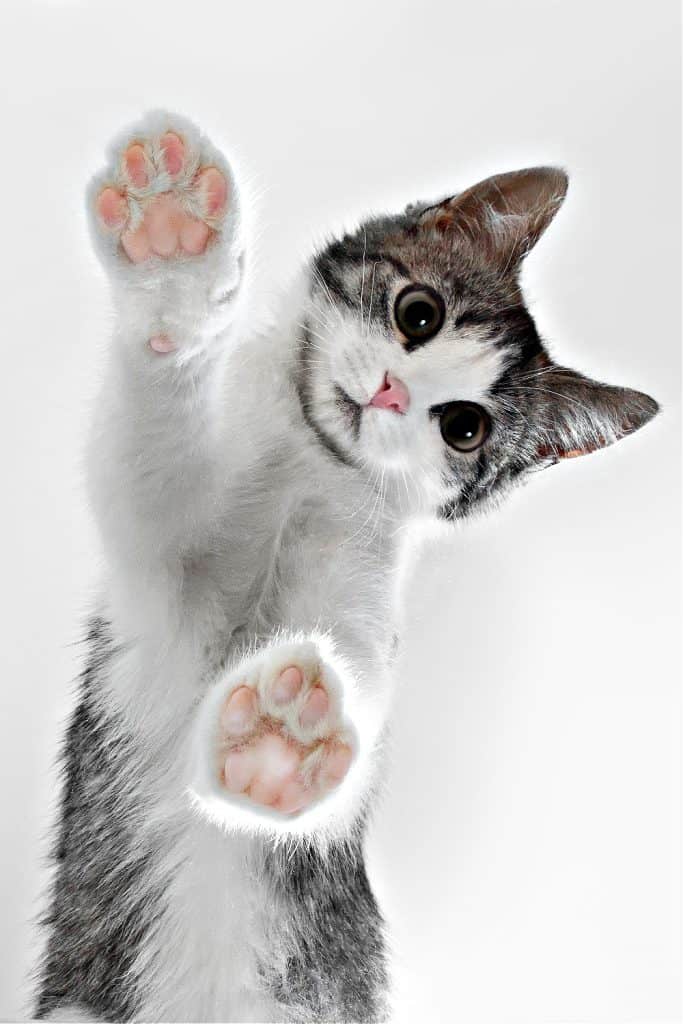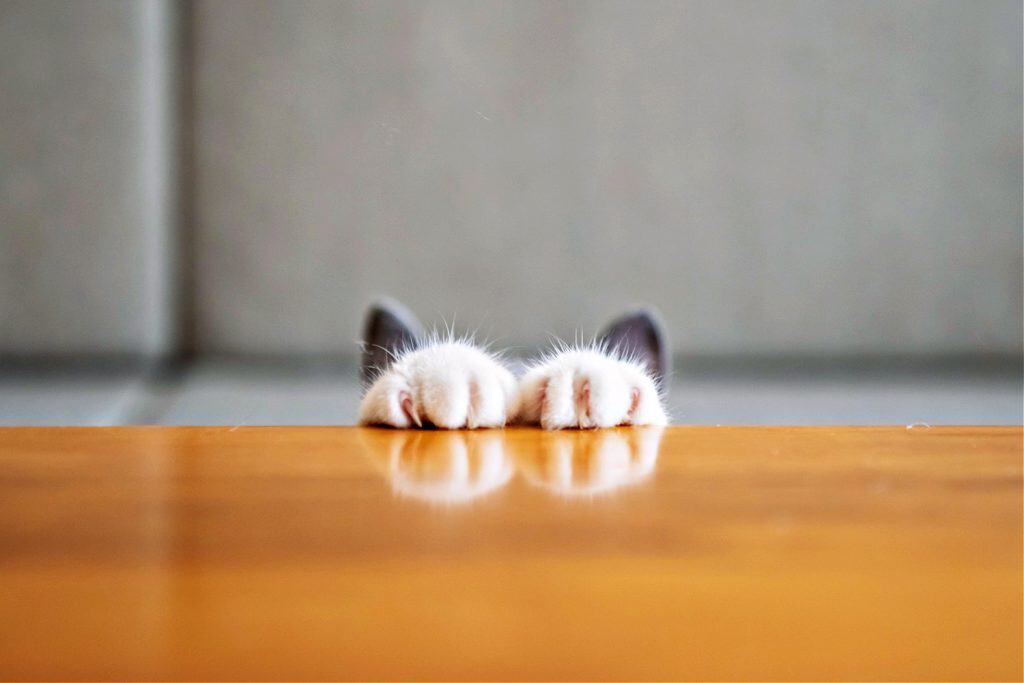Ah, the captivating charm of cat paws! If you're a cat lover, you've likely found yourself adoring their delightful, soft paws. But have you ever considered how remarkable these feline features truly are? Those charming paws are much more than mere toe beans.
In this guide, we will explore the amazing wonders hidden in your cat's soft paws, from their special structure to their important jobs.
We will also discover the many roles cat paws play in the lives of our beloved furry companions. We think you will be amazed by the fascinating wonders that lie beneath those adorable, cuddly cat paws you love!

Anatomy And Structure Of Cat Paws
The magic of cat paws starts with their complex design. Beneath the plush exterior, each paw possesses a sturdy structure, enabling our four-legged companions to carry out their daily tasks.
Central to the paw's anatomy is the paw pad. This resilient area, much like the soles of human feet, safeguards the paw's internals against rough terrains.
Additionally, it ensures excellent grip, enabling cats to skillfully navigate their surroundings.
The Digits: Exploring The Cat's Toes
The paw pad extends to the digits or toes. A front paw usually carries five digits, including an intriguing 'thumb' known as the dewclaw.
Unlike the rest, the dewclaw rests higher on the leg, away from the ground. Back paws, on the other hand, typically have four digits. However, in the cat kingdom, the rules can be flexible.
Polydactyl Cats: Extra Toes, Extra Charm
This brings us to polydactyl cats! With more toes on their paws due to a harmless genetic mutation, these cats exude an extra layer of charm.
These 'many-fingered' creatures, taking their name from Greek, can boast up to seven toes on each paw!
Capping each digit is a retractable claw, a defining feature assisting cats in climbing, hunting, playing, and expressing emotions.
In essence, cat paws are marvels of complexity and versatility. Every part contributes to forming a perfect tool for tackling a cat's life demands.
Scent Glands And Territorial Marking
Journeying beyond anatomy, paws also contribute to communication. Here, the invisible scent glands within the paws take center stage, leaving an impactful mark on the cat's surroundings.
Concealed between the pads and toes, these scent glands produce unique pheromones. Cats use this 'scent signature' to communicate and mark territories.
It's like an aromatic business card, sending messages to fellow cats. When your cat scratches a surface, it's more than just claw maintenance – it's a complex communication act.
Territorial Marking: Scratching Messages
Scratching serves multiple roles for a cat. Beyond stretching and keeping claws in check, it's an effective territory-marking strategy. The scent from paw glands boldly states, "This is my space."
Does your cat repeatedly scratch the same spot? It's not a mere coincidence. It's a continuous effort to refresh their scent mark, particularly relevant in multi-cat homes where shared spaces require clear boundaries.
So, paws do more than merely move cats around. They're key cat communication and territorial marking.

The Paw As Shock Absorbers And Sensors
In the splendid design of cat paws, there's a blend of strength and sensitivity. They act as both sturdy shock absorbers and subtle sensory tools.
When cats are in action, the paw's shock-absorbing quality comes to life. A high leap ends with a graceful landing, thanks to the cushiony paws absorbing the jump's impact.
This natural shock absorber protects their bones and joints from high-impact activities strain. It enables the signature cat acrobatics – climbing, hunting, jumping – without risk of harm.
However, shock absorption is just one side of the paw's story.
Paws As Sensory Sensors
If we probe deeper, we find that paws are also potent sensory instruments. They're the cat's touchpoint with the world, transmitting vital data about their environment.
Each paw is brimming with nerve receptors that sense temperature changes, texture variations, and environmental vibrations.
This sensory input enables safe and confident movement, whether it's navigating a tricky fence top, detecting prey movements under snow, or finding that favorite sunny spot.
Have you noticed your cat tentatively touches a new object with their paw before engaging fully? That's them using their paws to evaluate the situation before deciding on their next move.
So, cat paws are more than just cute extensions. They're sophisticated tools for interaction, protection, and communication.

Paws At Work: Hygiene And Grooming
Cats are famous for their exceptional grooming routines, dedicating substantial waking hours to maintaining perfect cleanliness. Here, their paws are indispensable, assisting in various hygienic tasks.
Grooming Tools: Paws In Action
A heartwarming sight for any cat lover is watching their pet engage in the timeless ritual of face washing. The cat starts by licking its front paw until it's thoroughly wet.
This moist paw then wipes from the top of its head down to its chin, effectively removing dirt and cooling the body through evaporation.
But paws aren't limited to face washing. Cats use their long, agile back legs – and the attached paws – to clean and comb fur on their back and sides.
This process removes loose fur, spreads natural oils for a glossy coat, and checks for fleas and other irritants.
Grooming isn't just about fur, though. Cats also use their paws to clean their ears. By lifting their hind leg over their head, they scratch their ears with their paws to remove any unwanted debris.
So, beyond their undeniable cuteness, cat paws play a crucial role in meticulous grooming routines that keep cats healthy and happy.

In Conclusion: Celebrating The Many Facets Of Cat Paws
In the world of cats, paws are much more than a soft, cute delight. They contribute significantly to the cat's adaptability and self-sufficiency, with their complex anatomical structure and diverse functions.
We've discovered the complexity of a cat's paw, highlighting the paw pad, digits, claws, and unique dewclaw. Additionally, we explored the peculiar charm of polydactyl cats with their extra toes.
We've journeyed into scent marking, understanding how cats leave unseen messages by scratching and articulating their presence in a sophisticated way. Their paws, hence, are integral to their social interactions and territorial claims.
Appreciating paws as shock absorbers have deepened our respect for the athletic feats cats achieve when jumping or landing.
Furthermore, their role as sensory tools, perceiving environmental changes and ensuring safe navigation, showcases their survival skills.
Finally, we can't overlook the vital role of paws in grooming, a remarkable aspect of their independence. Cats' diligent use of paws to maintain cleanliness reveals an extraordinary hygiene level, unmatched in the animal kingdom.
So, next time you're enchanted by a cat's soft, fluffy paw, remember the myriad roles it plays. These intricate natural wonders are a vital part of what makes cats such fascinating creatures.
You might also like:
Therapy Cats in Action: Changing Lives One Paw at a Time
Hunting Instincts: Why Your Cat Loves Putting Toys in Your Shoes
Some elements on this page may have been created by our team using advanced AI to provide you with top-notch cat inspired ideas. Read more about our AI Content Policy.
